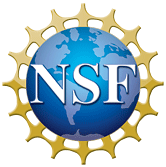Meeting:Abstract 2013 CSDMS meeting-017
| Continue registration: (If you haven't done already) |

|
Browse abstracts
The effect of snow: How to better model ground surface temperatures
[[Image:|300px|right|link=File:]]We present a method that reconstructs daily snow thermal conductivities using air and ground temperature measurements. The method recovers the daily snow thermal conductivities over the entire snow season. By using reconstructed snow conductivities we can improve modeling of ground surface temperatures. Simulation of the ground surface temperatures by using changing in time snow thermal conductivities could potentially reduce ground temperature modeling uncertainty.
The developed method was applied to four permafrost observation stations in Alaska. Reconstructed snow thermal conductivity time series for the interior stations in Alaska revealed low conductivity values that reach their maximum towards the end of the snow season, while the northern stations showed high conductivity values that reach their maximum towards the middle of the snow season. The differences in snow conductivities between interior and northern stations are most likely due to wind compaction which is more pronounced in the Northern Arctic lowlands of Alaska.
